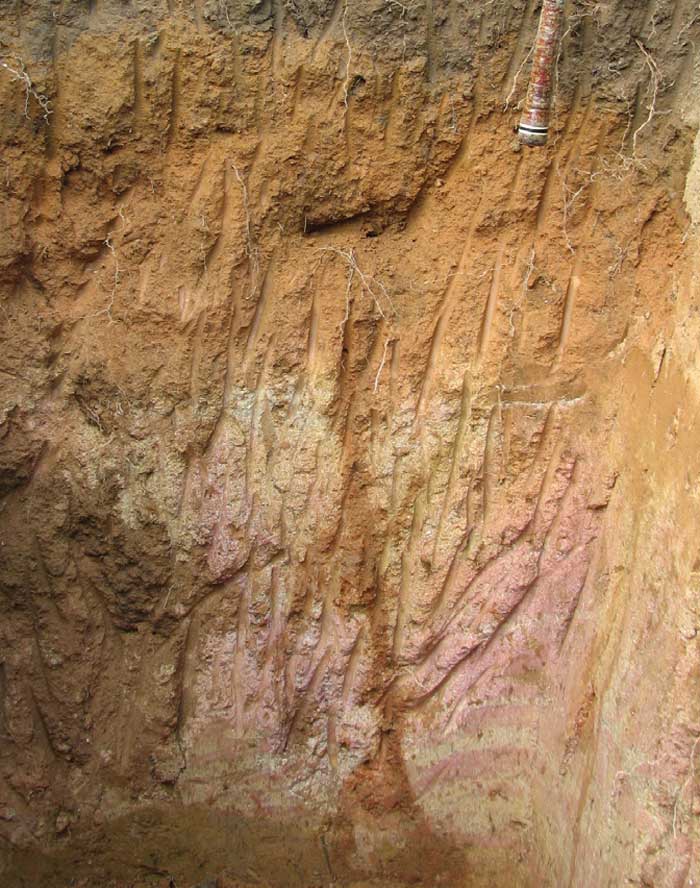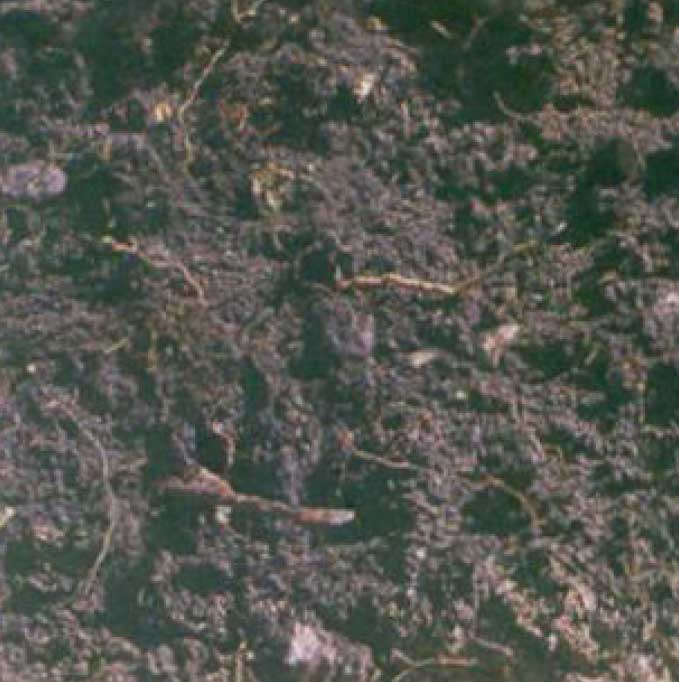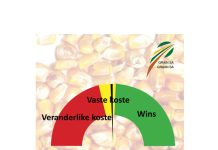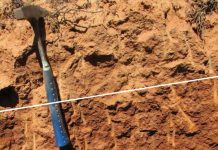In the previous two articles in this series, the soil formation factors and processes were discussed. With these factors and processes in action, it gives rise to a variety of chemical, physical and morphological characteristics. These characteristics are used as the basis to classify soils into related groups.
When a specific body of soil is classified, the characteristics thereof may be easily communicated. Also, the properties thereof may be interpreted, after which the suitability of this body of soil may be evaluated for a specific land use. In this article, the classification of South African soils will be discussed.
Classification of South African soils
The two best known soil classification systems in the world are the World Reference Base (WRB) and the USDA Soil Taxonomy (a system developed in the USA). These two systems may be used to classify soils throughout the world.
As these systems do not make provision for the full variety of South African soils, Soil Classification: A Binomial System for South Africa was published in 1977. It was followed in 1991 by Soil Classification: A Taxonomic System for South Africa, and is currently used exclusively in South Africa to classify soils. The third issue namely Soil Classification: A Natural and Anthropogenic System for South Africa, was published in June 2018.
According to Soil Classification: A Taxonomic System for South Africa, five topsoil horizons and 25 subsoil horizons are recognised as diagnostic (may be used to classify the master horizons in a soil profile). Combinations of the horizons give rise to the recognition of 74 soil forms in the Taxonmic System and 135 natural soil forms and 7 anthropogenic soil forms in the Natural and Anthropogenic System. A few of the most common soil forms and their allied soil forms, which are used for grain production in South Africa, are discussed in this article. The rest of this article is based on the Taxonomic System.
In order to classify a soil, the master horizons must first be marked out, after which these master horizons are classified into diagnostic horizons. The sequence of diagnostic horizons determines the soil form. Lastly, the soil family is determined.
Topsoil horizons
Only five diagnostic topsoil horizons are acknowledged. These are the organic O, humic A, vertic A, melanic A and orthic A horizon.

The organic A is a topsoil horizon which is enriched with organic material (>10% C) and is therefore usually a noticeably darker colour than the underlying horizon. A humic A horizon has undergone humification and eluviation (loss of clay and sesquioxides). Vertic A horizons (typical turf clay) are formed through inversion as a result of large quantity of 2:1 clays (>30%). Melanic A horizons are defined according to their dark colour and strong structure. The orthic A horizon is defined as one which is not classified as one of the other four topsoil horizons. Soil types with an orthic A horizon are by far (>95%) the most common soils in South Africa which are used for grain production.
The thickness of topsoil horizons most often varies between 15 cm in the drier parts of South Africa and 40 cm in the wetter climatic areas. Thinner and thicker examples are, however, common.
Subsoil horizons
The 25 diagnostic subsoil horizons occur below a topsoil horizon. They are classified as B, C, E, G, or R master horizons.
In the majority of cases, one or more forms of accumulation or enrichment are the dominant processes, with the redistribution of iron, in particular, an important example of a secondary process. The processes are pertinently driven by a single factor or combinations of the soil formation factors.
The subsoil horizontals will be discussed further in future articles.
Soil forms
When a soil profile is analysed from top bottom, characteristic horizons may be identified. The specific sequence of the horizons is not coincidental, their existence is particularly driven by the soil formation factors and processes.

In some of the soil forms, a topsoil horizon and only one subsoil horizon are acknowledged, as in the case of the Hutton form which only consists of an orthic A horizon and a red apedal B horizon. In many cases, a specific combination of two subsoil horizons are acknowledged. An example of this is the Avalon format which comprises an orthic A topsoil horizon, over a yellow-brown apedal B horizon and over a soft plinthic B horizon. The overwhelming majority of the bodies of soil that occur in South Africa, can easily be accommodated within the 74 soil forms of the South African soil classification system.
Soil groups
Differing soil forms often have a certain soil formation process in common and, according to this, they may be grouped together into larger groups. Examples are the lime rich soils, the podzolic soils, plinthic soils, young soils and rocky soils. Such a soil group informs the user about a number of common characteristics and properties which, with experience, may be interpreted effectively and be evaluated for land use.
In the recent issue of Soils of South Africa (Fey, 2010), the current 74 soil forms are grouped together in related soil groups according to the soil formation processes (Table 1). These groups help the inexperienced user to interpret the properties and the active soil formation processes and the effect they will have on land use.

Groups 1 to 4 are based on the top soils. Groups 5 to 11 all have an orthic topsoil and are characterised by the enrichment of the subsoil. Groups 12 to 14 comprise those soils that developed in young sediments with poor horizon differentiation.
Discussion of soil groups
Hereunder, the applicable properties and soil formation processes of each soil group are discussed. In this article, groups 1 to 4, where the processes are dominant in the topsoil, are discussed. In the next article, the rest of the groups, where the dominant processes take place in the subsoil, will be discussed.
Soil group 1: Organic soils
- The dominant process is the accumulation of organic material due to water saturation, low temperature, extreme acidity and other factors that inhibit microbe activity, as well as the degradation of organic material. The addition of large quantities of organic material via adapted plants is important under these conditions.
- Organic soils are hydromorphic and therefore occur in the lowest areas of the landscape. Their distribution is mainly in the cooler and wetter high-lying eastern portion of South Africa. They are high in organic matter, but are commonly poorly degraded and poorly humidified with a high C:N ratio.
- Due to their occurrence in the wettest parts of the landscape, they are not usually used for grain production on a commercial basis. They should also not be used for that purpose and commercial tillage is banned by legislation.
Soil group 2: Humic soils
- The dominant process is the accumulation of organic matter in old landscapes in the cool, high rainfall areas of South Africa. Good drainage, accumulation of iron and aluminium oxides and low pH conditions, which inhibit microbe activity, are essential for the formation of humic soils.
- The conditions under which humic soils form, give rise to highly weathered soils with a low CEC and base status. The high organic material content gives rise to a low bulk density and are less prone to compaction.
- In general, this soil is highly productive when used for crop production. Due to the leaching and acidity, large quantities of lime or gypsum are necessary to prepare the soil for crop production. The soil’s aggregates are stable and less susceptible to erosion. Mineralisation of the organic matter provides large quantities of nitrogen for plant growth, but also degrades the soil in the long term.

Soil group 3: Vertic soils
- The dominant property is a strong swelling and shrinkage property during wetting and drying. This gives rise to the process during which topsoil is constantly falling from above into the cracks and down into the subsoil after which the cracks close with wetting. Cracks form again with drying and so the process continues. The effect of this is that the soil itself is constantly turning itself (inversion) to form a thick A horizon.
- Vertic soils have a high clay content (typically >50%) and 2:1 clay minerals of the smectite group dominate the clay fraction, which allows the soil to form wide cracks when it dries out. The soil is very sticky when wet. It has a very strongly developed structure with slickensides which are indicative of high physical activity. The CEC is high and its base status is usually 100%. When it is dry and cracked, the water infiltration rate is very high, but as soon as it has closed through swelling, the hydraulic conductivity is very low, leading to a very low final infiltration rate.
- Vertic soils have a high nutritional value and they are potentially highly productive, but the hydraulic properties are unfavourable. Under irrigation high crop yirlds may be achieved, provided the water retention problems can be managed. The physical properties of vertic soils (sticky when wet, hard when dry) make it very difficult to till it mechanically. The soil’s physical movement holds major danger for foundations and this must be kept in mind when foundations are designed.
Soil group 4: Melanic soils
- Characteristic of melanic top soils is their well-developed structure, due to it having a combination of a high clay percentage and a reasonable amount of organic material and humus. It has a high base status (therefore not leached) and has dark colours, even under dry conditions, due to organic material and humus. Melanic soils frequently occur in the low-lying areas of the landscape, but can also occur in any other place. Basic igneous rocks are strongly associated with melanic soils and provide the cations for the higher base status, as well as the clay-forming minerals which form both kaolinite and smectite clays.
- The well-developed structure and high base status are favourable properties for plant production and, as a result, this soil has the potential to be highly productive, depending on where it occurs in the landscape, as well as the under-lying horizons. Those in well-drained positons in the landscape may be used successfully for grain production. The soil is less sticky, does not swell as much and has a good water infiltration rate and good water retention rate. They are therefore reasonably suitable for tillage.

Summary
The primary objective of soil classification is to classify together soils that have similar properties and which will react similarly under specific usage. This classification contributes greatly to communication because a variety of chemical, physical and morphological properties are brought together in the name of the soil.
This again eases decisions on the appropriate land use. It also forms the basis of soil mapping during which the occurrence and distribution of soil bodies with similar properties, may be identified and indicated geographically on a soil map.
For further information, please contact the authors on:
Martiens du Plessis: 072 285 5414 / martiens@nwk.co.za; of Prof Cornie van Huyssteen by (051) 401 9247 of vanhuyssteencw@ufs.ac.za.
In the next issue, the soil groups with an orthic A topsoil, but a variety of subsoils, will be discussed.
REFERENCES
Fey, M. 2010. Soils of South Africa. Cambridge University Press: Cape Town, South Africa.
Soil Classification Working Group. 1991. Soil Classification – A taxonomic system for South Africa, Department of Agricultural Development: Pretoria. Van Huyssteen, CW. 2009. Unpublished class notes for GKD214, University of the Free State: Bloemfontein.

















